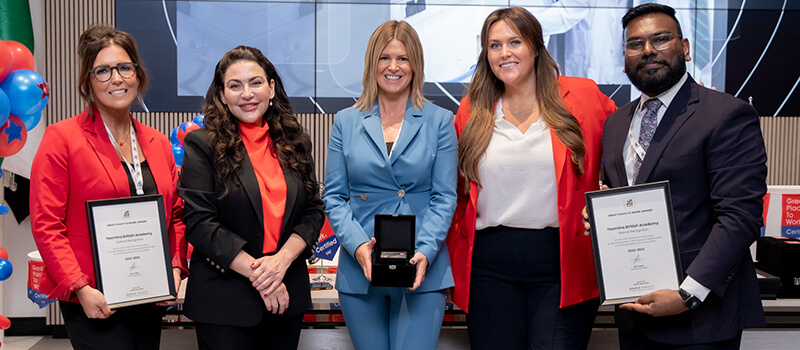Top 7 Best Web Development Frameworks
Introduction
Web development frameworks are the foundation of any web application. They provide the necessary functionality to build fast, secure and scalable websites, APIs and mobile apps. In this article we will discuss 7 best web development frameworks that you can use for your next project:
Django
- Django is a free and open-source web framework written in Python.
- It is maintained by the Django Software Foundation.
- Its primary goal is to ease the creation of complex, database-driven websites.
- Most of these sites are powered by the Django framework, including Pinterest, Instagram, Mozilla and The Washington Times.
Angular
Angular is a front-end web application framework, maintained by Google and community, that helps with the development of single-page applications. Angular provides declarative templates, dependency injection, end to end tooling and integrated best practices to build long lasting applications.
Angular is built in TypeScript which is developed by Microsoft. It uses HTML as the template language and JavaScript as the programming language.
ExpressJS is a back-end web application framework. It helps develop and create back-end web applications that can run on NodeJs server or inside browsers using JS runtimes like Chrome’s V8 engine or Node’s bundled `uv` runtime module (Node 4+).
Flask
Flask is a microframework for Python, and it’s used to create web applications. It’s lightweight, simple and easy to use. Flask is written in Python, so it runs on the CPython interpreter and can be used with any operating system that supports Python 2.7 or later (including Linux, Mac OS X and Windows).
The main advantage of Flask is its simplicity: all you need to get started with Flask is just a few lines of code! This makes it an ideal framework if you’re just learning how to make websites or apps but don’t want something as complicated as Django or Rails weighing down your work—you can easily get started making things happen without having to worry about creating custom database models from scratch or configuring your own server environment.
Laravel
Laravel is an open-source PHP web framework, created by Taylor Otwell and intended for the development of web applications following the model–view–controller (MVC) architectural pattern. The first beta version was released on June 9, 2011 and Laravel 3 was released in February 2012 with a set of new features including the command-line interface (Artisan), built-in support for more database management systems, database migrations as a form of version control for database layouts, support for Google’s Guzzle HTTP library and improved Eloquent ORM.
Spring Boot
Spring Boot is an open source framework for creating enterprise applications with the Spring Framework. It is a convention-over-configuration solution that requires no XML configuration files, which are often difficult to maintain and keep up-to-date. It provides a fast and easy way to create boilerplate code for Spring applications, but still allows you to customize it when needed.
Spring Boot makes it very easy to get started with your project as all you need to do is add some dependencies in pom file or ivy file and your application will be ready to run!
Allows you write less code by providing features like auto configuration and auto wiring of beans which means you don’t need build XML files manually anymore.
Express.js
Express.js is a minimalist web framework for Node.js that provides a robust set of features for building single, multi-page, and hybrid web applications. It’s designed to provide robust features for building single, multi-page, and hybrid web applications.
It is inspired by Sinatra but adds support for node specific features like the filesystem and cluster support via redis or memcached. Express also offers many conveniences over other frameworks such as providing an easy logging system or builtin sessions out of the box so you don’t have to hassle with creating your own infrastructure.
However if all you want is just a simple server that does what it says then this might be too much overhead for you!
Ruby on Rails
Ruby on Rails is a web application framework written in Ruby. It is open source and free to use. It was created by David Heinemeier Hansson and first released in 2004.
Ruby is an interpreted, high-level, general-purpose programming language. It was designed and developed by Yukihiro Matsumoto in the mid-1990s. Its syntax has an extremely simple but elegant design that makes it easy to read and write programs with fewer lines of code than other languages such as C++ or Java
ASP.NET Core
ASP.NET Core is a modern web framework that allows developers to create cross-platform applications written in C# and F#. You can use it to build your APIs, RESTful services, and web sites with .NET Core 2.0 or higher support.
ASP.NET Core has been developed by Microsoft as an open source web framework for building modern business solutions on top of the .NET Framework stack, including websites, web APIs, microservices and mobile apps (both native & cross-platform).
It’s designed to be highly modular and extensible via NuGet packages within Visual Studio Code with its own integrated development environment (IDE) called DNX (which stands for .NET Execution Environment).
Conclusion
So, there you have it. The top seven web frameworks. As you can see, there are many options to choose from when deciding which framework will work best for your project. Each one has its pros and cons, but we hope that this list has helped you make an informed decision about which one may be best for you and your needs!







